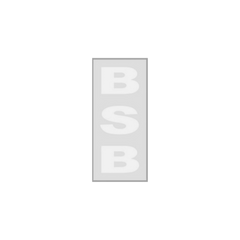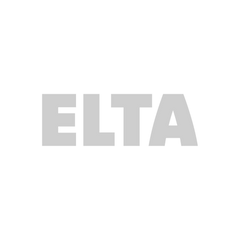Shop All
AUMULLER KSA CLK 24VDC Stroke 600N
From £725.90 excl. VATUnit price excl. VAT /UnavailableAUMULLER KS4 S12 24VDC Chain Drive 400N
From £618.02 excl. VATUnit price excl. VAT /UnavailableAUMULLER KS2 S2 24VDC Chain Drive 200N R
From £373.71 excl. VATUnit price excl. VAT /UnavailableD+H BSY+ Chain Drive Set 24V, 2x 300N, 800mm
£1,267.69 excl. VATUnit price excl. VAT /UnavailableActulux HCV500/0350 EN12101-2 Chain drive 24VDC-500N-350mm in white
£270.83 excl. VATUnit price excl. VAT /UnavailableActulux HCV500/0600 EN12101-2 Chain drive 24VDC-500N-600mm in white
£278.65 excl. VATUnit price excl. VAT /Unavailable
Find out more about Chain Actuators
General Information
General Information
Chain Actuators serve as essential components in building automation systems because they provide dependable operation for ventilation systems and smoke control systems and access control systems. In the UK and across the EU, the design and application of these actuators are governed by standards such as BS EN 12101 for smoke and heat control systems and BS EN 60335 for electrical safety of household and similar equipment.Manufacturers and installers who follow compliance standards will reach both operational reliability and safety in the long term.
The engineering requirements for chain actuators include maintaining reliable operation in harsh operational environments. This includes meeting the rigorous testing requirements set out in EN 1366 for fire resistance of service installations, and ensuring compliance with the Construction Products Regulation (CPR), which underpins CE and UKCA marking.The frameworks guarantee proper operation of actuators during life safety system development.
The implementation of energy efficiency requirements serves as an additional compliance mechanism. UK Building Regulations Part L, along with the EU Ecodesign Directive, require that building services equipment such as actuators and drives are designed to minimise energy consumption.The practical implementation of chain actuators needs to achieve power conservation during standby operation while providing enhanced performance and easy integration with intelligent building management systems.
Sustainability is increasingly central to specification.Building operators who choose actuators that follow ISO 14001 environmental management principles and energy efficiency standards will decrease their carbon emissions while staying compliant with European and national regulations. The chain actuator requires advanced control features and modular designs and materials selection that supports circular economy objectives.
The installation process requires proper execution while specifiers and installers need to maintain equipment throughout its operational life. Regular testing against BS EN 12101 protocols ensures that chain actuator will perform as intended in smoke and heat exhaust ventilation systems (SHEVS).Real-time monitoring of energy savings and system uptime and compliance status becomes possible through the combination of digital building twins with smart monitoring tools for facilities teams.
Chain actuators serve as essential components which help organizations meet regulatory requirements while achieving energy efficiency and sustainability goals. The actuators meet both legal requirements and long-term building performance goals because they follow the current British Standards and EU directives and UK building regulations.
Frequently Asked Questions
What must engineers verify about stroke length and clear opening requirements when specifying Chain Actuator?
What must engineers verify about stroke length and clear opening requirements when specifying Chain Actuator?
Confirm the actuator’s rated stroke meets the required clear opening for ventilation/smoke control and that the chain can travel without kinking or fouling the sash. Check compliance with the project fire strategy (e.g., BS EN 12101-2 for NSHEVs, EN 12101-8 for dampers, BS 9999, and Approved Document B (Fire Safety)). Detail brackets, pivot geometry, and stops on drawings, and verify free area with a mock-set or manufacturer free-area tables.
This answer references a standard(s) that are relevant. There may however be many other standards that need to be considered. We recommend you refer to our technical bulletins for more detailed references to applicable standards but also you should check with your professional consultants and the approving authorities prior to purchasing to check compliance.
Please see the Actuators Technical Bulletin for more information.
During installation, how should contractors deal with force output vs. sash weight or damper torque on ChainActuator?
During installation, how should contractors deal with force output vs. sash weight or damper torque on ChainActuator?
Match the actuator’s push/pull force to the worst-case load: sash weight, wind/snow
pressure, seals, and any dampers’ torque. Prove on site by functional tests from fully closed to fully open against seals. If in doubt, use tandem/synchronised units or higher force models.
Which standards or guidance apply to synchronised multi-point drive systems for Chain Actuator?
Which standards or guidance apply to synchronised multi-point drive systems for Chain Actuator?
Use manufacturer-approved sync controllers and communication cables; follow maximum cable lengths and device counts. Commission for position matching, stall protection, and common failsafe. Where used for smoke control, align with the relevant EN 12101 parts, BS 7346-8 (Code of practice for smoke control), and the fire strategy.
This answer references a standard(s) that are relevant. There may however be many other standards that need to be considered. We recommend you refer to our technical bulletins for more detailed references to applicable standards but also you should check with your professional consultants and the approving authorities prior to purchasing to check compliance.
Please see the Actuators Technical Bulletin for more information.
What are common mistakes with end limit setting and feedback signals on Chain Actuator, and how can they be avoided?
What are common mistakes with end limit setting and feedback signals on Chain Actuator, and how can they be avoided?
Frequent errors: setting limits against the frame (not the sash), ignoring seal compression, wiring dry contacts as analogue signals, and omitting end-of-travel interlocks. Avoid by setting limits with seals engaged, using the correct IO type (0–10 V, 4–20 mA, or contacts), and recording calibrated set points.
How does wind load and façade pressures impact commissioning and handover for Chain Actuator?
How does wind load and façade pressures impact commissioning and handover for Chain Actuator?
High external pressures increase required opening force and may cause mid-stroke stall. Verify opening under worst-case conditions (with reference to BS EN 1991-1-4 for wind load assumptions) (or simulate via gasket preload). Record test conditions, achieved clear opening, and motor current draw in the handover pack.
This answer references a standard(s) that are relevant. There may however be many other standards that need to be considered. We recommend you refer to our technical bulletins for more detailed references to applicable standards but also you should check with your professional consultants and the approving authorities prior to purchasing to check compliance.
Please see the Actuators Technical Bulletin for more information.
What site constraints affect push vs. pull orientation for Chain Actuator?
What site constraints affect push vs. pull orientation for Chain Actuator?
Constraints include hinge side, sash depth, reveal obstructions, and water shedding. Choose the orientation that keeps the chain in straight tension/compression, avoids scuffing, and protects the chain from water and debris. Use drip details outdoors.
What evidence should be included in O&M packs for bracket geometry and fixing loads on Chain Actuator?
What evidence should be included in O&M packs for bracket geometry and fixing loads on Chain Actuator?
Include bracket drawings with hole patterns, fixing types and torque, substrate verification, photos of installed brackets, and any reinforcement details. Add pull-out/ shear calculations in line with BS 8539 (Code of practice for construction fixings) if required by the designer.
In retrofit projects, how does cable routing and segregation change for Chain Actuator?
In retrofit projects, how does cable routing and segregation change for Chain Actuator?
Expect re-routing to clear existing services and finishes. Maintain segregation between SELV/ELV, power, and comms; protect cables through moving zones with grommets/ducts; avoid sharp radii near the actuator head. Update as-built routes on drawings.
What design issues commonly arise with local overrides and FSCS integration on Chain Actuator?
What design issues commonly arise with local overrides and FSCS integration on Chain Actuator?
Clashes arise from unclear priority (fire vs. manual), mismatched signal types, or missing emergency stops. Define priority matrix (FSCS > Fire Alarm > BMS > local), check IO compatibility in accordance with BS 5839-1 and BS 7273-4, label overrides, and witness priority tests (FSCS > Fire Alarm > BMS > local), check IO compatibility, label overrides, and witness priority tests.
This answer references a standard(s) that are relevant. There may however be many other standards that need to be considered. We recommend you refer to our technical bulletins for more detailed references to applicable standards but also you should check with your professional consultants and the approving authorities prior to purchasing to check compliance.
Please see the Actuators Technical Bulletin for more information.
How can contractors troubleshoot problems linked to commissioning timings and cycle tests on Chain Actuator?
How can contractors troubleshoot problems linked to commissioning timings and cycle tests on Chain Actuator?
If timeouts occur, verify supply voltage at the head during travel, limit settings, and load. Run the manufacturer’s auto-learn routine if available, complete rated cycle tests (open/close) and log currents and travel times to confirm stability.
What must engineers verify about maintenance intervals and lubrication when specifying Chain Actuator?
What must engineers verify about maintenance intervals and lubrication when specifying Chain Actuator?
Confirm the actuator is maintenance-free or note lubrication/inspection intervals. Specify filtering (if dusty), cycle counts per year, and replacement strategy. Add access provisions for safe inspection without dismantling the sash.
During installation, how should contractors deal with retrofit on existing frames on Chain Actuator?
During installation, how should contractors deal with retrofit on existing frames on Chain Actuator?
Check substrate strength (timber, aluminium, uPVC, steel) and introduce spreader plates or backing steels where required. Use manufacturer brackets; avoid improvising spacers that introduce misalignment. Prove smooth travel under load post-fix.
Which standards or guidance apply to IP rating and environment for Chain Actuator?
Which standards or guidance apply to IP rating and environment for Chain Actuator?
Select IP rating for location (internal, humid, external) and temperature class. Protect external units with hoods or upstands; avoid water paths into the actuator head. Ensure all accessories (limit switches, junction boxes) match the same IP class.
What are common mistakes with noise levels and speed trade-offs on Chain Actuator, and how can they be avoided?
What are common mistakes with noise levels and speed trade-offs on Chain Actuator, and how can they be avoided?
Choosing faster travel can raise noise and peak current; ultra-quiet modes can reduce opening speed below smoke-vent targets (note: EN 12101-2 specifies minimum opening times for NSHEVs). Balance targets at design, then verify dB(A) and travel time during commissioning with doors/windows closed to capture real acoustics.
This answer references a standard(s) that are relevant. There may however be many other standards that need to be considered. We recommend you refer to our technical bulletins for more detailed references to applicable standards but also you should check with your professional consultants and the approving authorities prior to purchasing to check compliance.
Please see the Actuators Technical Bulletin for more information.
How does obstruction sensing and safety stops impact commissioning and handover for Chain Actuator?
How does obstruction sensing and safety stops impact commissioning and handover for Chain Actuator?
Test obstruction detection (current/force thresholds) and confirm the chain stops and retreats safely without damage. Record trigger thresholds, test method, and outcomes. Ensure obstruction sensing does not compromise the minimum free area required for smoke exhaust (BS EN 12101-2). Ensure no hard stops or grille work can notch the chain.
This answer references a standard(s) that are relevant. There may however be many other standards that need to be considered. We recommend you refer to our technical bulletins for more detailed references to applicable standards but also you should check with your professional consultants and the approving authorities prior to purchasing to check compliance.
Please see the Actuators Technical Bulletin for more information.
What site constraints affect integration with panels and BMS for Chain Actuator?
What site constraints affect integration with panels and BMS for Chain Actuator?
Constraints include panel distance (voltage drop), available IO types, earthing, and space for power supplies and sync modules. Verify signal scaling and fail-safe priorities (fire open/close) with witnessed tests.
What evidence should be included in O&M packs for thermal breaks and mounting details on Chain Actuator?
What evidence should be included in O&M packs for thermal breaks and mounting details on Chain Actuator?
Provide details showing thermal continuity/ breaks (with reference to Approved Document L and BS EN ISO 10077 for thermal performance) at fixing points, condensation risk assessment at the head, and confirmation that mounting does not compromise the façade’s U-value or water barrier. Include photos and method statements.
This answer references a standard(s) that are relevant. There may however be many other standards that need to be considered. We recommend you refer to our technical bulletins for more detailed references to applicable standards but also you should check with your professional consultants and the approving authorities prior to purchasing to check compliance.
Please see the Actuators Technical Bulletin for more information.
In retrofit projects, how does emergency manual release change for Chain Actuator?
In retrofit projects, how does emergency manual release change for Chain Actuator?
Where manual release is required, specify accessible handles or clutch mechanisms and signage. Demonstrate manual release under power loss and alarm-active conditions, and record reset procedures in the O&M.
What design issues commonly arise with documentation and O&M packs on Chain Actuator?
What design issues commonly arise with documentation and O&M packs on Chain Actuator?
Missing serial numbers, limit settings, sync addresses, and priority matrices are common. Build the O&M progressively: datasheets, factory certificates, commissioning sheets (stroke/force/current), as-builts, and maintenance schedules.
How can contractors troubleshoot problems linked to common installation errors on Chain Actuator?
How can contractors troubleshoot problems linked to common installation errors on Chain Actuator?
Check for bracket misalignment, racked sashes, cable strain at the head, and incorrect IO wiring. Re-learn limits, verify voltage under load, and test against seals. Replace any visibly kinked or twisted chains and re-commission fully.
What are common mistakes with end limit setting and feedback signals on Chain Actuator, and how can they be avoided?
What are common mistakes with end limit setting and feedback signals on Chain Actuator, and how can they be avoided?
Frequent errors: setting limits against the frame (not the sash), ignoring seal compression, wiring dry contacts as analogue signals, and omitting end-of-travel interlocks. Avoid by setting limits with seals engaged, using the correct IO type (0–10 V, 4–20 mA, or contacts), and recording calibrated set points.
What are common mistakes with end limit setting and feedback signals on Chain Actuator, and how can they be avoided?
What are common mistakes with end limit setting and feedback signals on Chain Actuator, and how can they be avoided?
Frequent errors: setting limits against the frame (not the sash), ignoring seal compression, wiring dry contacts as analogue signals, and omitting end-of-travel interlocks. Avoid by setting limits with seals engaged, using the correct IO type (0–10 V, 4–20 mA, or contacts), and recording calibrated set points.
What are common mistakes with end limit setting and feedback signals on Chain Actuator, and how can they be avoided?
What are common mistakes with end limit setting and feedback signals on Chain Actuator, and how can they be avoided?
Frequent errors: setting limits against the frame (not the sash), ignoring seal compression, wiring dry contacts as analogue signals, and omitting end-of-travel interlocks. Avoid by setting limits with seals engaged, using the correct IO type (0–10 V, 4–20 mA, or contacts), and recording calibrated set points.


















